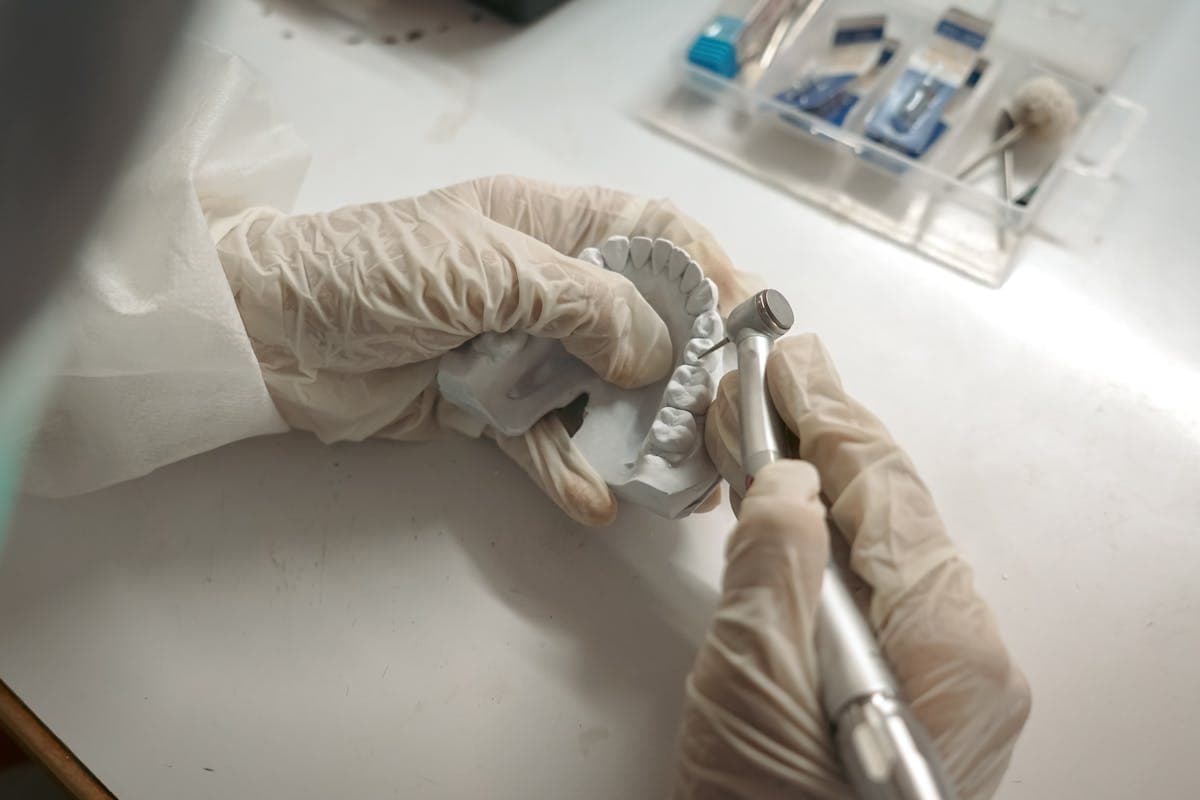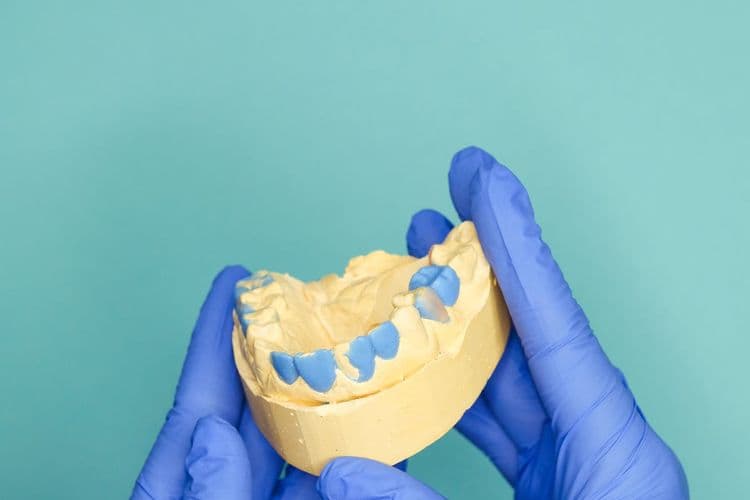The investment in dental impressions is an essential aspect of oral healthcare, but the cost can be a major concern for many patients. While the price range can fluctuate between $50 to $200 per tooth, largely dependent on whether traditional alginate or digital impressions are utilized, there are also other factors that come into play, such as the dentist’s expertise, location of the practice, and the complexity of the procedure. These elements can greatly influence the final cost. It begs the question, are there ways to mitigate these expenses and make dental health more affordable?
Understanding Dental Impressions
Dental impressions serve as a fundamental aspect in the field of dentistry. They provide a detailed representation of a patient’s oral cavity, facilitating the creation of dental appliances, restorations, and aids for diagnostic purposes. The utmost importance is given to impression accuracy, as it directly influences the fit and functionality of the dental work. The accuracy of these impressions is dependent on the materials used, the techniques applied, and the expertise of the dental professional. Additionally, patient comfort during the impression-taking process is paramount. It is the responsibility of the dental practitioner to guarantee the patient experiences minimal discomfort, contributing to a positive overall dental experience. Consequently, understanding dental impressions is crucial to appreciate their significance in maintaining oral health.
Types of Dental Impressions
Several distinct types of dental impressions are utilized in modern dentistry, each serving a specific purpose. These impressions provide a vital blueprint for dental work, allowing for customized restorations, appliances, and treatments tailored to the patient’s unique oral structure.
- Digital Impressions: This modern method uses advanced technology to capture a highly accurate, 3D impression of the teeth and gums. The dentist uses a handheld scanner, eliminating the need for physical impression materials.
- Alginate Impressions: These are traditional dental impressions made using a quick-setting, seaweed-based material. Alginate impressions are often used for preliminary casts or diagnostic models.
- Silicone Impressions: Highly accurate and stable, silicone impressions are often used in more complex dental procedures, such as crown and bridge work, where precision is key.
The Process of Making Impressions
Understanding the process of creating dental impressions is critical to appreciating their value in the dental health landscape. This involves a careful look at the procedure itself, the materials utilized in the impressions, and the steps taken to guarantee accuracy. These aspects collectively shed light on the intricate details and precision required in the production of these important diagnostic tools.
Dental Impressions: The Procedure
Although it may seem like an intricate process, creating dental impressions is actually quite straightforward and typically involves a few basic steps. The procedure is designed with the dual aim of impression accuracy and patient comfort.
- Preliminary Examination: The dentist conducts an initial assessment of the patient’s oral cavity to identify any abnormalities that may affect the impression.
- Impression Making: A tray filled with a soft, gel-like substance is placed over the teeth. The patient bites down, allowing the substance to mould around the teeth and gums, capturing every detail.
- Final Inspection: Once removed, the impression is inspected for accuracy. Any discrepancies can lead to a repeat of the process, ensuring patient comfort and the best possible outcome.
Despite its simplicity, the procedure’s success hinges on the dentist’s skill and precision.
Materials Used in Impressions
The materials selected for dental impressions play a pivotal role in ensuring the accuracy and success of the procedure. Various impression materials are used, each with specific properties catering to certain impression techniques. Alginate, a cost-effective and non-toxic material, is frequently used for preliminary impressions. It captures fine details and provides a comfortable experience for the patient. Polyvinyl siloxane and polyether are often used for final impressions due to their superior accuracy and dimensional stability. However, their application requires careful handling and precision. Dental impression materials also include zinc oxide-eugenol and polysulfides, though they are less commonly used today. The choice of material depends on the clinical situation, patient comfort, and the dentist’s preference.
Steps for Accurate Impressions
Steering the process of making accurate dental impressions requires meticulous attention to detail and a thorough understanding of the materials and techniques involved.
- Preparation of the Impression Tray: Tailoring the tray to the patient’s mouth is vital. The right size and shape guarantee impression accuracy.
- Application of the Impression Material: Understanding the properties of impression materials aids in selecting the appropriate one. In addition, proper mixing and application techniques contribute to impression accuracy.
- Taking the Impression: Carefully inserting the tray into the patient’s mouth and holding it steady while the material sets is an essential step. Knowledge of impression techniques is necessary to avoid distortion and guarantee an accurate result.
These steps, when followed correctly, lead to precise dental impressions.

Factors Influencing Impression Costs
The cost of dental impressions is not uniform and can be influenced by several factors including the type of dental impression, geographic location, and dental insurance coverage. Different types of impressions can vary in price due to the complexity of the procedure and the materials used. Also, the cost may fluctuate based on the region or city where the procedure is performed, while dental insurance coverage can greatly reduce out-of-pocket expenses.
Type of Dental Impression
Undeniably, the cost of dental impressions can vary considerably, with the type of impression being a vital influencing factor.
- Traditional Impressions: Usually less costly, these involve the use of physical materials such as alginate or silicone. However, they come with disadvantages like discomfort for the patient and the potential for human error.
- Digital Impressions: Although initially more expensive due to the investment in digital impressions technology, these can provide significant benefits. They offer improved accuracy and efficiency, resulting in a better patient experience and potentially lower long-term costs.
- Comparison: When comparing traditional impressions and digital ones, the upfront cost is an essential factor. However, considering the accuracy, comfort, and long-term savings, it’s worth evaluating the merits of digital technology.
Geographic Location Influence
Moving beyond the types of dental impressions, it’s important to recognize that the geographic location plays a considerable role in determining costs. Urban areas often have higher dental impression costs compared to rural regions due to the increased overhead costs associated with operating in densely populated cities. Conversely, rural areas may offer lower prices, but may also come with limited service options. Additionally, regional pricing disparities can be observed, often reflecting the cost of living and the concentration of dental professionals in a particular area. For instance, dental impressions in New York City may be markedly more expensive than in a small town in the Midwest. This geographic variation in cost is a critical factor to evaluate when budgeting for dental impressions.
Dental Insurance Coverage
How does dental insurance coverage impact the cost of dental impressions? Dental insurance, particularly the specifics of your dental plan, can greatly influence impression costs.
- Coverage Limits: Every dental plan has coverage limits, which dictate the maximum amount the plan will pay for specific procedures. If the cost of dental impressions exceeds these limits, you’ll need to cover the difference.
- Deductibles and Co-pays: Deductibles are the amount you pay before your insurance begins to cover costs. Co-pays are fixed amounts paid per visit or procedure. Both can affect the final out-of-pocket cost.
- Plan-specific Provisions: Some dental plans may classify impressions as diagnostic or preventative care, which might be covered differently than other treatments. Always review your dental plan’s provisions before undergoing any dental procedure.
Average Cost of Dental Impressions
The cost of dental impressions can vary greatly based on several factors. The accuracy of the impression and the dental technology used are two primary influencers on cost. Traditional impressions, which are less accurate and use older technology, can range between $50-$100 per tooth. However, with the advent of digital impression systems, the precision and accuracy have markedly improved. These systems utilize advanced imaging technology to create a highly accurate 3D model of your teeth, eliminating the need for physical mold-making. The cost for these digital impressions can range anywhere from $100-$200 per tooth. It’s essential to recognize that these are just average costs and can vary based on the dentist’s experience, location, and additional procedural requirements.
Insurance Coverage for Impressions
Does your dental insurance cover the cost of impressions? It’s essential to understand what your policy entails. Many insurance plans offer dental benefits, but coverage for impressions can vary.
- Coverage limitations: Not all insurance plans cover dental impressions. Some might only cover a portion of the cost, leaving you to cover the rest.
- Insurance benefits: Many plans include benefits for preventative care, which might include impressions in certain situations. If your dentist determines that impressions are necessary for treatment, your insurance might cover it.
- Policy details: Every insurance policy is unique. Be sure to read yours carefully to understand exactly what is covered.
Saving on Dental Impression Costs
Understanding the nuances of your insurance coverage for dental impressions can indeed help manage costs. However, careful budget planning and applying discount strategies can also reduce expenses. This involves setting aside a specific amount for dental care, factoring in potential costs of impressions. Look into dental discount plans, which offer substantial reductions for a yearly membership fee. Furthermore, some dentists offer loyalty rewards or discounts for upfront payments. Finally, consider purchasing a dental impression kit for home use, reducing both consultation and procedure fees. Remember, while cost-saving is important, it should never compromise the quality of dental care. Always consult with your dentist before making decisions to confirm appropriateness and safety.
Comparing Costs of Different Clinics
How can one guarantee they are receiving the best value for their dental impressions? Clinic comparisons allow for the exploration of pricing variations and can lead to significant savings.
- Research: Start by investigating several dental clinics. Each clinic’s offerings, pricing, and customer reviews should be examined.
- Comparative Analysis: Analyze the pricing variations among the researched clinics. This includes the cost of dental impressions, but also any additional services that may be included.
- Decision Making: The final step is making an informed decision based on your findings.
Frequently Asked Questions
What Are the Potential Risks or Side Effects of Dental Impressions?
Potential risks of dental impressions include elevated discomfort levels during the process and potential allergic reactions to the materials used. These risks are generally low, but patients should discuss any concerns with their dentist.
How Should I Care for My Mouth Post-Impression?
Post-impression, maintaining ideal oral hygiene is essential. Regular brushing and flossing can prevent potential irritation from residual impression materials. Rinsing with warm salt water can also soothe any minor discomfort.
Can I Eat or Drink Before Taking a Dental Impression?
Yes, you can eat or drink before a dental impression. However, for ideal impression comfort, it’s recommended to follow pre-impression guidelines which may suggest avoiding certain foods and beverages immediately prior to the procedure.
How Long Do Dental Impressions Usually Last?
Dental impressions typically last for several years, though this can vary. Impression duration largely depends on the quality of the material used and the accuracy of the impression-making process. Regular dental visits guarantee their longevity.
Are There Any Alternatives to Traditional Dental Impressions?
Yes, there are alternatives to traditional dental impressions. Digital impressions, for instance, employ advanced technology to capture detailed and accurate dental structures, offering a more comfortable experience than traditional impression materials.


